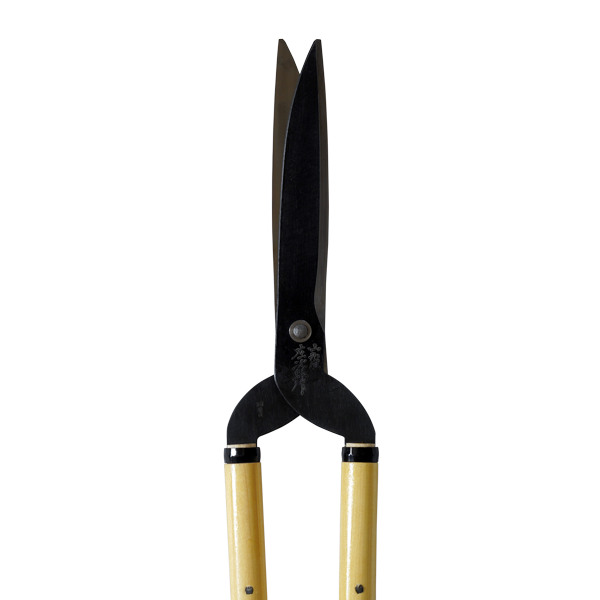Karikomi 210mm Shears (Double and Curved Edge) - Kanto Type
Karikomi 210mm Shears (Double and Curved Edge) - Kanto Type
The Karikomi Shears have a slight curve to the blade. They are well suited to cloud pruning and box hedge clipping.
Do not rely on the handles to do the cutting – they are wood and can snap with too much lever pressure. The handle length is designed for reach, not leverage.
The choice between Kanto and Yamagata type shears comes down to preference. Some people find the Kanto type less fatiguing due to the cross-over blades, while others prefer the more traditional Yamagata type.
Couldn't load pickup availability
Share
{Maker/Brand}Maker
Tobisho
{Maker/Brand}Origin
Yamagata Prefecture, Japan
{Maker/Brand}Stock Keeping Unit
SH-2
{Specifications}Material(s)
Yasuki Aogami Steel No.2 (edge) + Vegetable-tanned leather (sheath)
{Specifications}Handle
Magnolia
{Information}Feature
These karikomi shears are traditional japanese shears that do not include cushioning or stoppers. The blades are intended to cross over to provide the cleanest of cuts.
{Information}Inclusions
Vegetable-tanned leather sheath
{Information}Care Instructions
The blades are made of high carbon steel. High carbon steel blades must be treated to avoid rusting. Japanese traditionally use Camellia (Tsubaki) Oil to treat high carbon steel tools. Other suitable oils may also be used. Ensure the blade is clean and dry before applying Camellia Oil. Simply wipe the blade with a clean cloth impregnated with Camellia Oil. Re-apply after each use. Although the blades of Tobisho secatuers, shears, pruners and clippers are made of hardened steel, they're not impervious to misuse. Only use for the specified activity on this page. Do not cut wire, metal, stone, plastic or any other hard material. Even bamboo fibres and some very hard woods, especially knots and burrs, can damage hardened steel edges. Dropping the tool onto a hard surface may cause the blade to break. Do not twist or apply uneven pressure. Cutting should occur along the section of the edge(s) closest to the handle. Cutting at the point or tip runs the risk of snapping the blade.
Related Products
Related Product
Related Product
Related Product
Related Product
Related Product
Related Product











